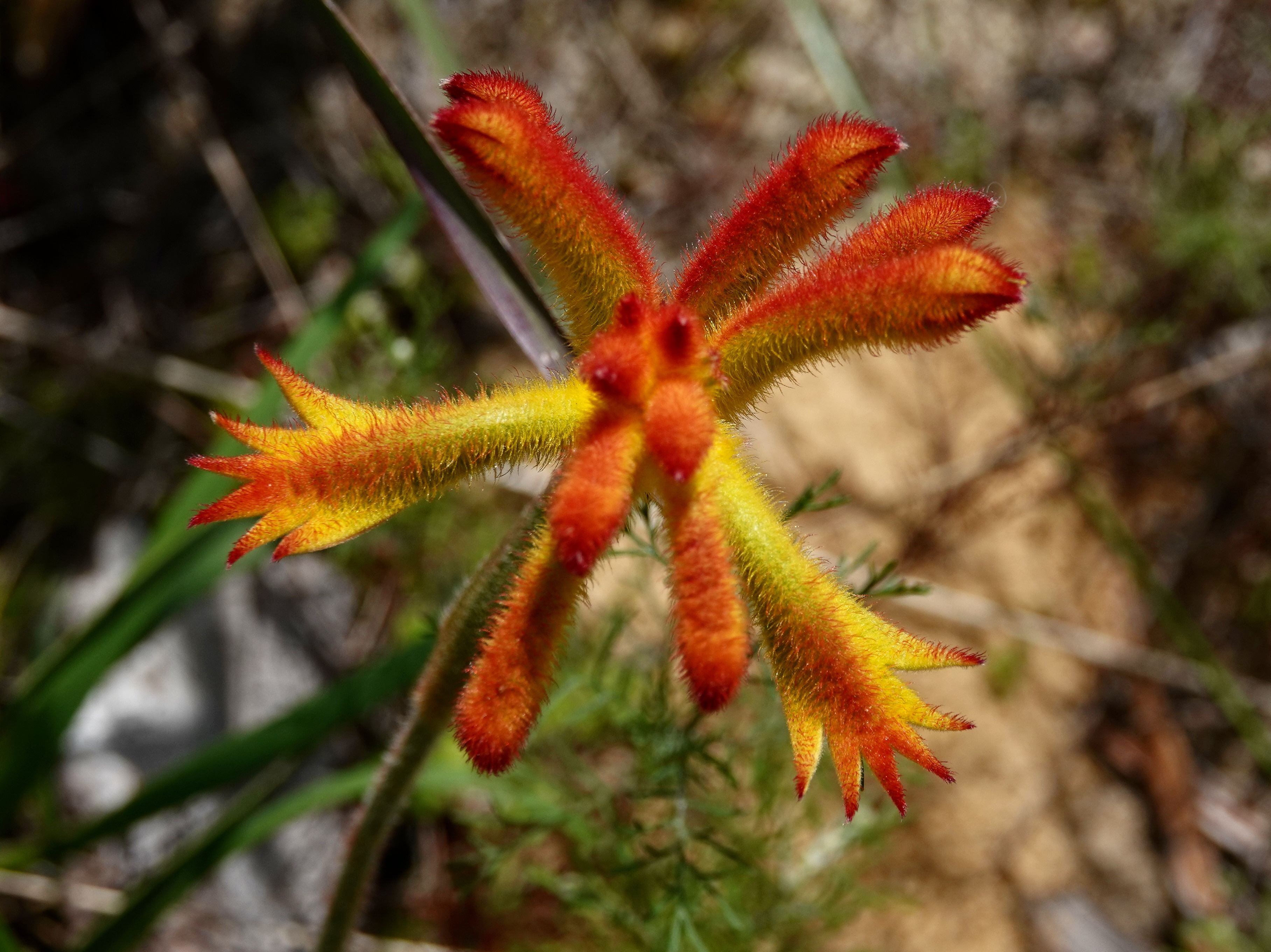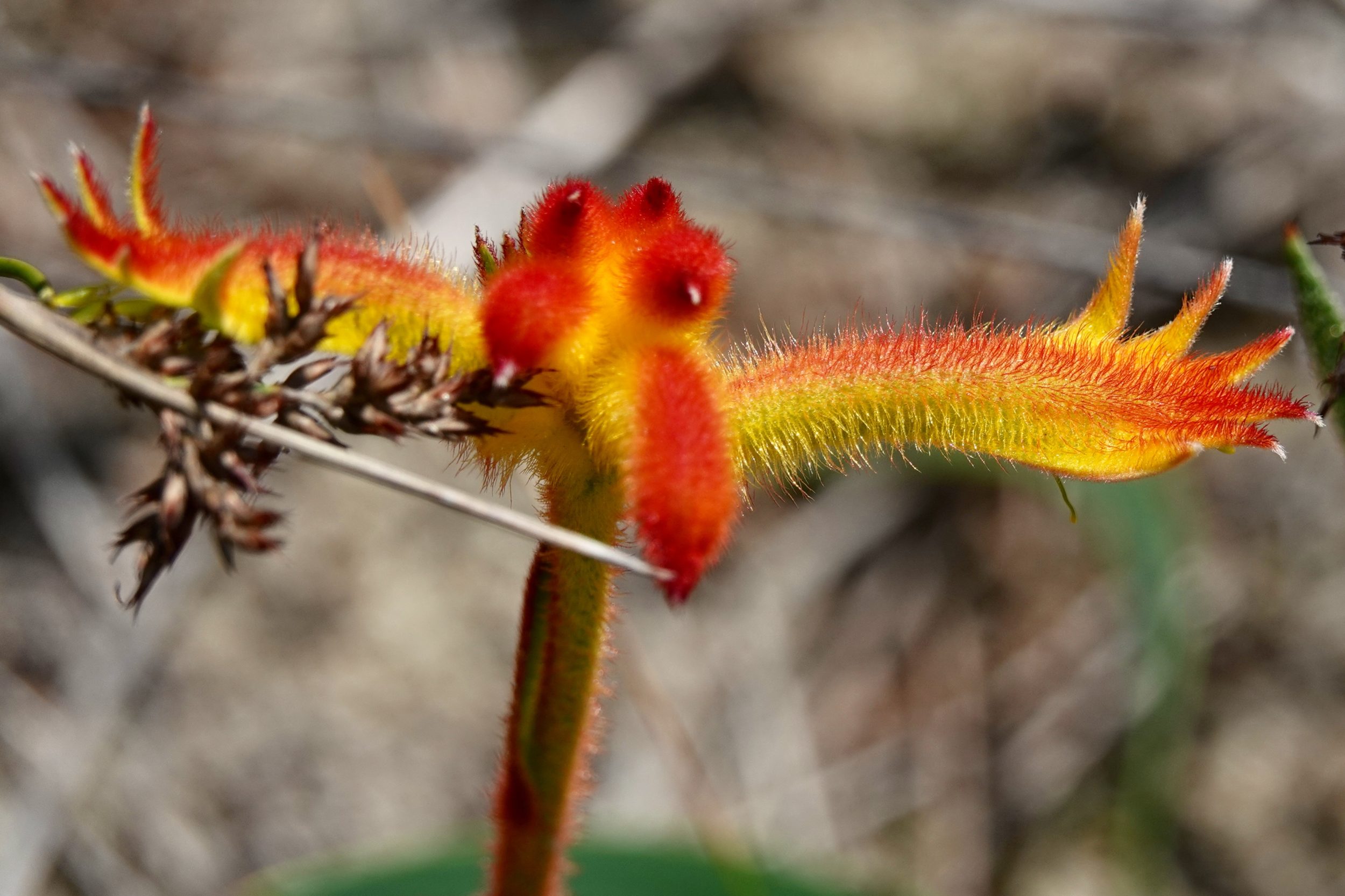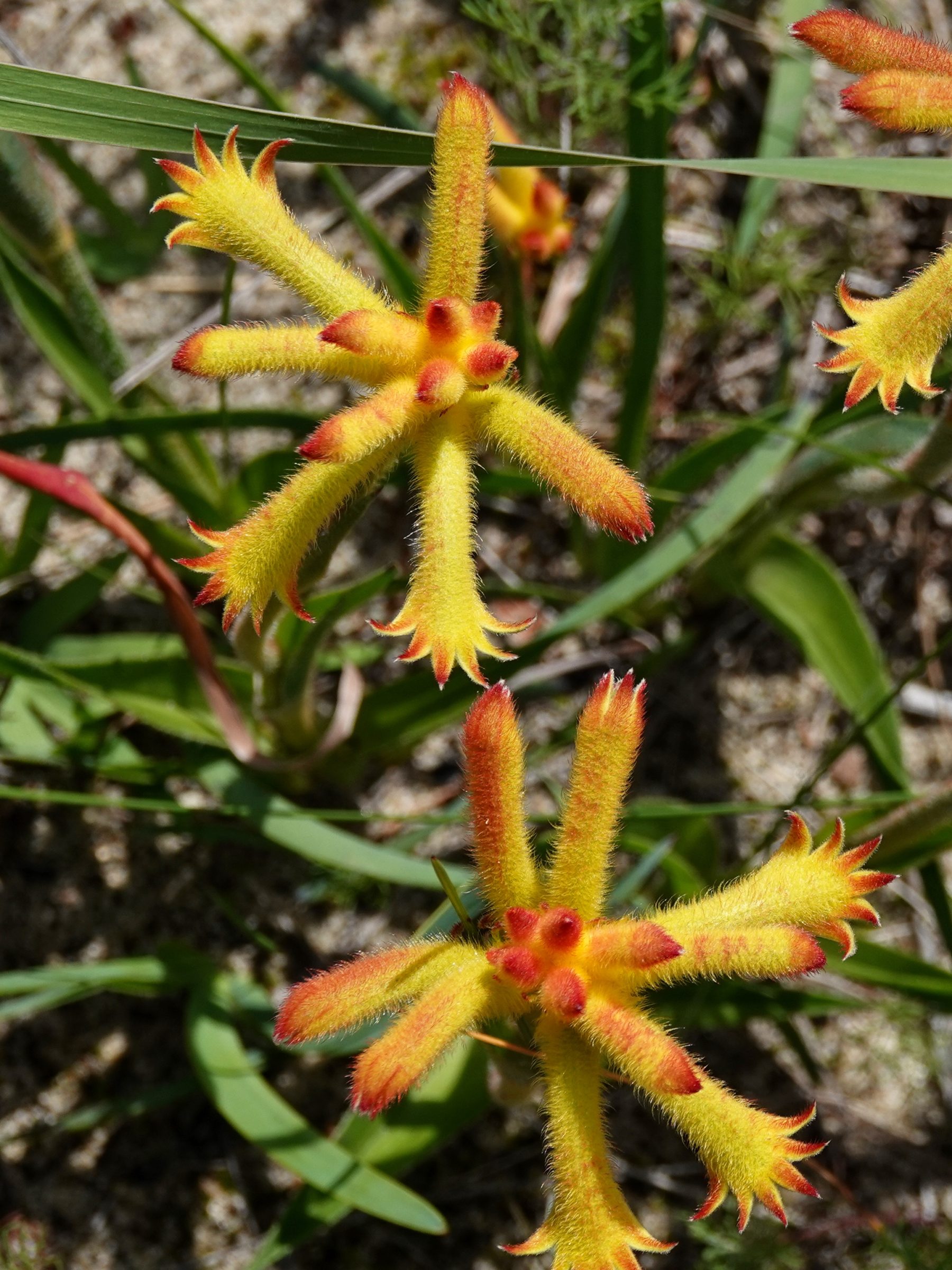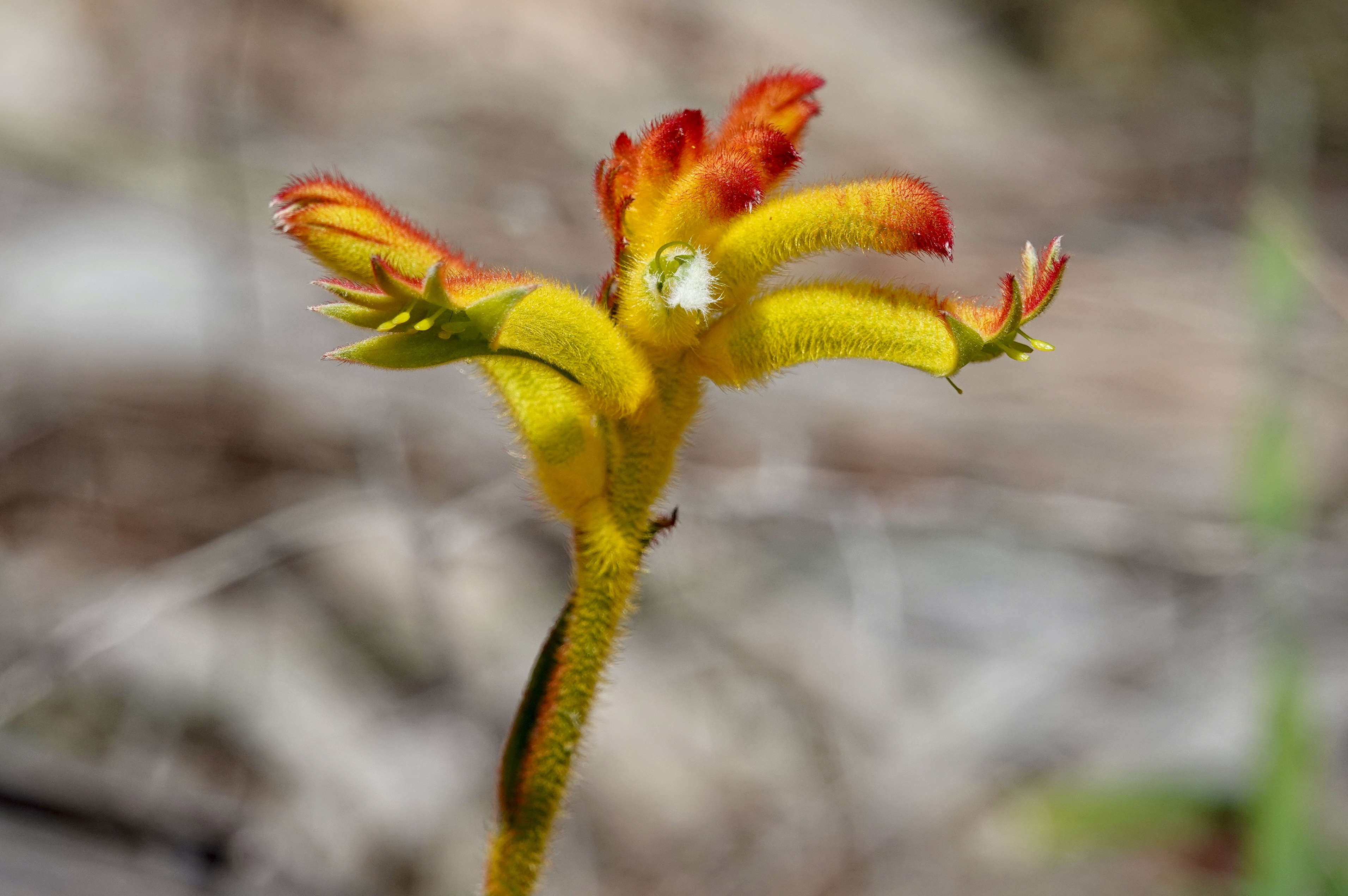…but bees are of little or no use to this – or any other – member of the Kangaroo Paw family!
A future post, coming soon, will explain why.
The Kangaroo Paw family is entirely endemic to Australia’s southwestern “corner”.
It has just twelve members; eleven species (plus several naturally occurring subspecies…and this family’s popularity with/difficulties for domestic gardeners has led to an ever-growing number of cultivated hybrids) comprise the genus Anigozanthos.
The other is sole member of the genus Macropidia.
Eight of the twelve species are commonly known as Kangaroo Paws; the other four (plus their subspecies) are generally known as Cats Paws.
If you click here, a pair of pictures will show clearly why some are likened to kangaroos’ feet, and others to cats’.
Understandably, the generally taller, more obviously spectacular Kangaroo Paws are much more widely celebrated/“instagrammed” than are Cat’s Paws.
If one pays close attention, however, one discovers that Cat’s Paws are equally beautiful.
Their multi-hued, hairy surfaces are both exquisite and astonishing; I recommend zooming in on/enlarging this post’s images

All photos in this post are copyright Doug Spencer, taken at Wireless Hill Conservation Park, Thursday, 03 September, 2020.
This post’s Cat’s Paws are all the most common kind, Anigozanthos humilis.
Depending on one’s vantage point – and the highly-various characteristics of individual plants – Cat’s Paws can look very neat or nicely untidy, and can resemble UFOs or Christmas decorations!


